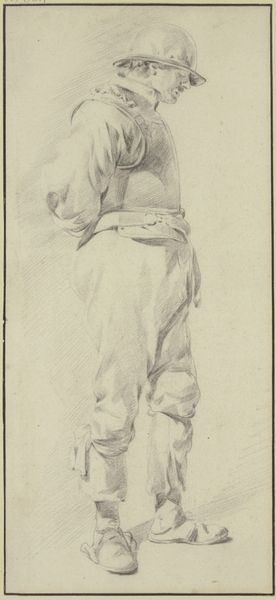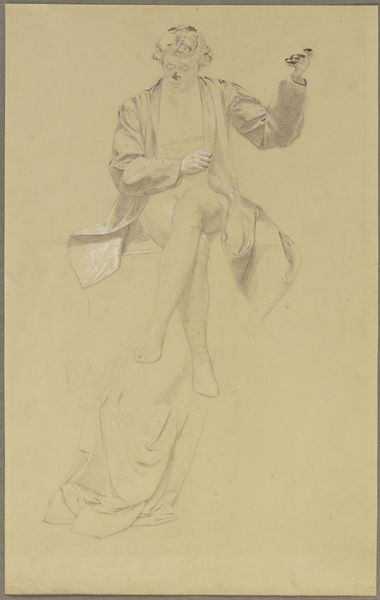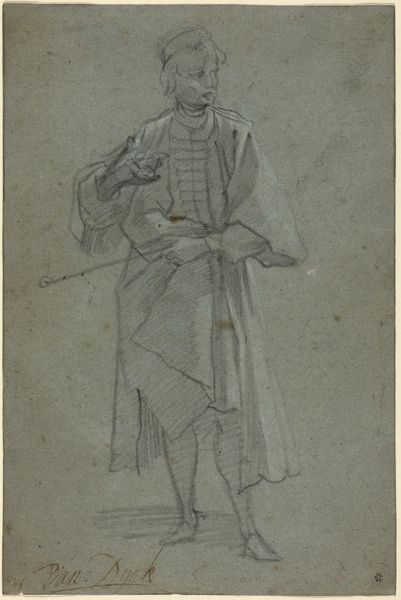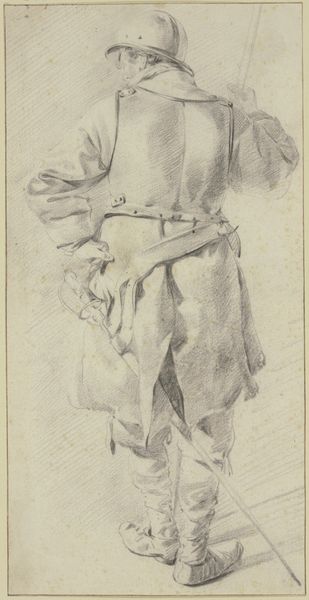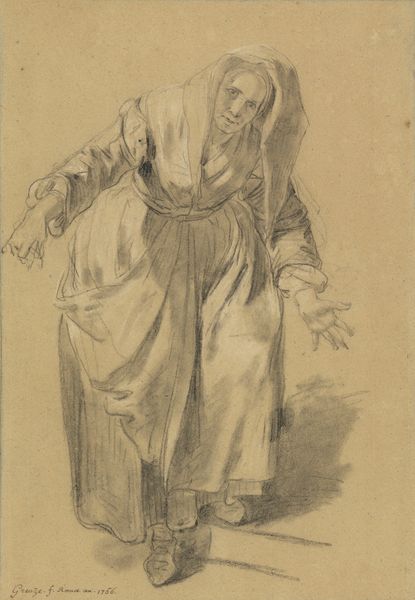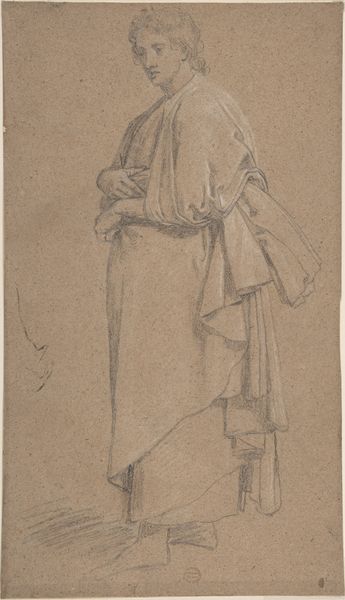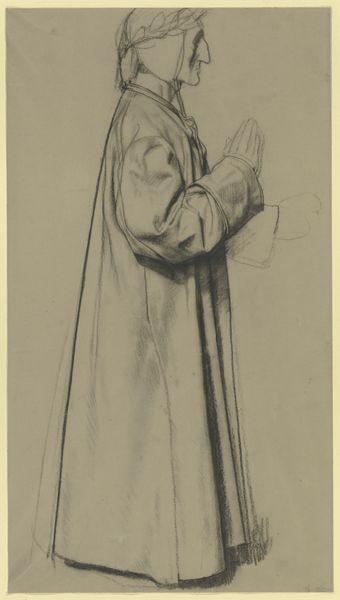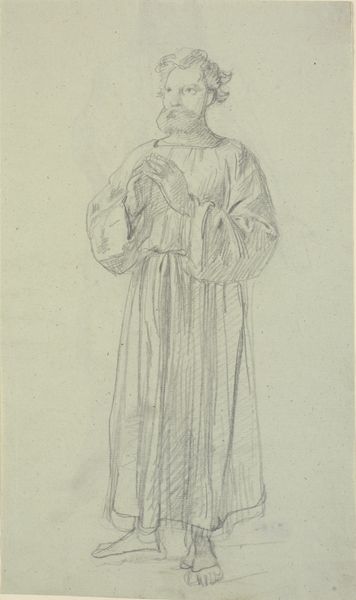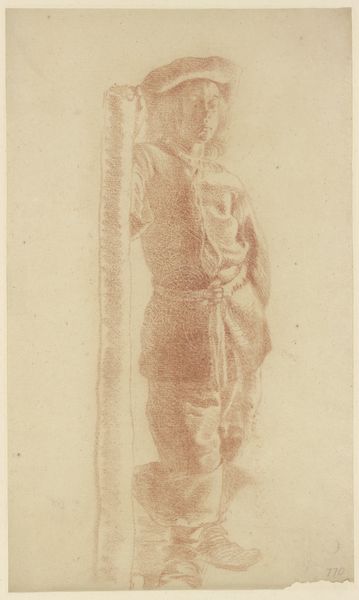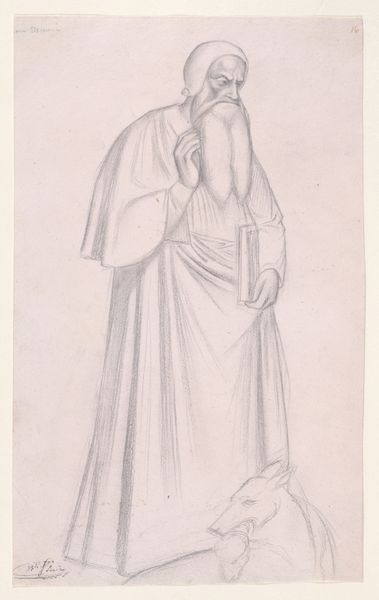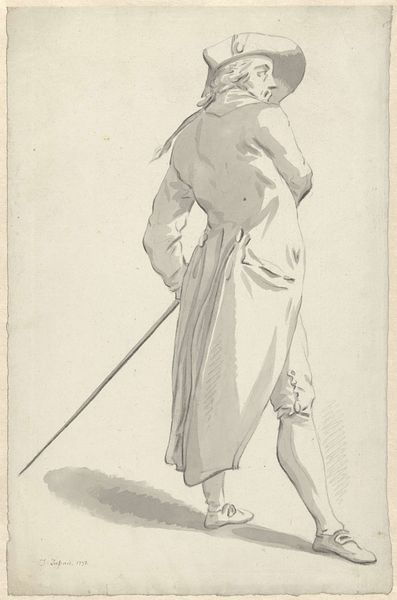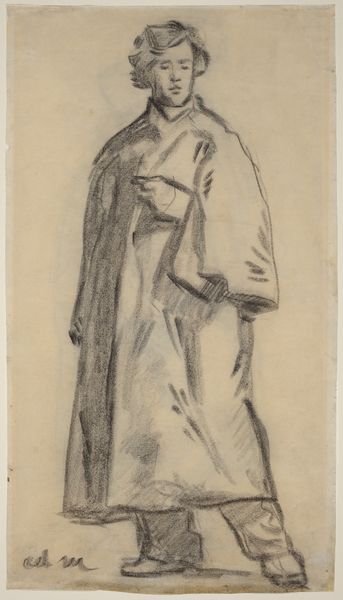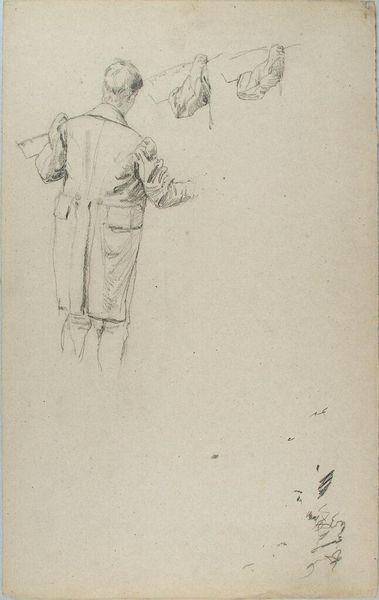
drawing, pencil, chalk
#
portrait
#
pencil drawn
#
drawing
#
netherlandish
#
baroque
#
figuration
#
pencil drawing
#
pencil
#
chalk
#
portrait drawing
Copyright: Public Domain
Editor: This is a drawing by Johan le Ducq entitled "Landsknecht, nach rechts gewendet" housed here at the Städel Museum. It seems to be done with chalk or pencil. It looks like a study for a painting. I find the figure's gaze really intriguing. What details strike you the most about this drawing? Curator: The application of line and shadow in defining the Landsknecht's form are especially notable. Observe the almost diagrammatic rendering of the folds in his clothing. The artist delineates texture and volume not through tonal gradation but through the density and direction of hatched lines. Editor: Yes, I see that! So, would you say the cross-hatching and the stark contrast are techniques to emphasize the figure's texture, like the metal of the armor? Curator: Precisely. Moreover, the spatial organization adheres to a structuralist understanding. The figure occupies a clearly defined plane, set apart from an almost nonexistent background, compelling the viewer to concentrate solely on its intrinsic form. This begs the question, what is the function of such visual grammar? Editor: Perhaps, the drawing is more focused on form than any narrative content, focusing the viewer on the individual's structural qualities and less about the historical narrative? Curator: Indeed. One can consider that Ducq is consciously prioritizing the study of form and construction over illusionistic representation or emotional expression. The portrait is thus more an exercise in semiotics than a window into a historical moment. Editor: This gives me a completely different perspective on how to approach drawings in the future. I will pay more attention to the use of formal elements as a language in themselves. Curator: An excellent starting point. Formal analysis encourages a richer experience of art.
Comments
No comments
Be the first to comment and join the conversation on the ultimate creative platform.
